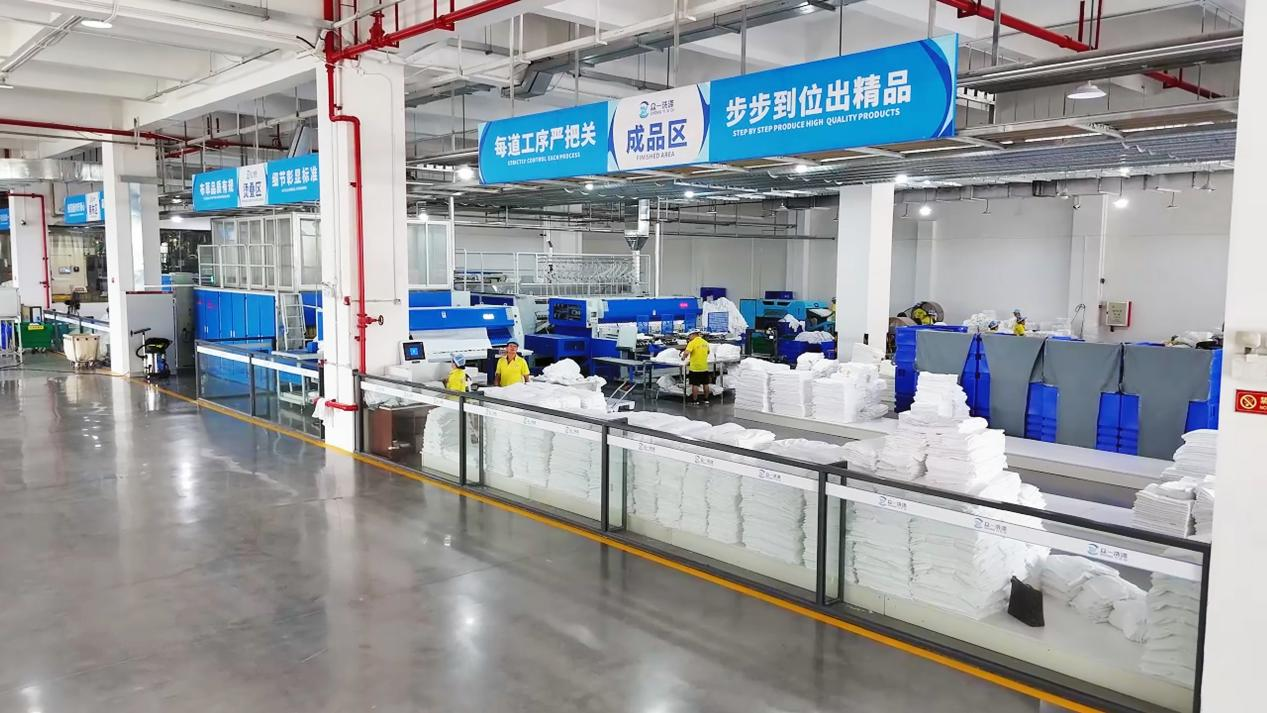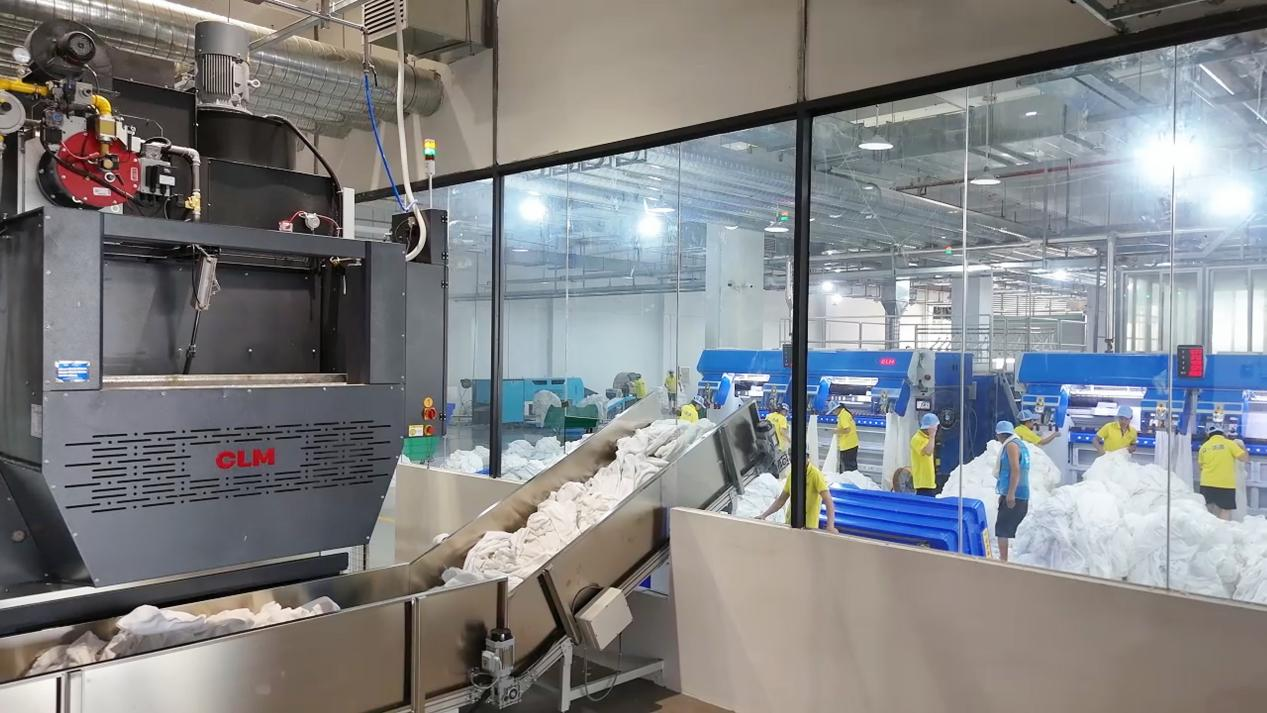The hygiene and safety of hotel linen are directly related to guest health and their accommodation experience, which is also the core service standard of the linen laundry plant. If people want to realize the 100% hygienic disinfection of hotel linen, they should form a full-process closed loop from washing and disinfection methods, cross-contamination prevention, to water quality management. The detailed guide for the hotel linen laundry plant practitioners is as follows.
Three Core Disinfection Methods
These are the first line of defense for linen hygiene.
❑ Thermal disinfection method
Thermal disinfection uses physical actions such as temperature and light to denature and solidify the proteins of microorganisms. It is the first method for hotel linen disinfection. The core standard is: the washing temperature is over 80 degrees Celsius, and the duration should be 10 minutes. Temperature and time are the fundamental guarantees for the disinfection effects. In addition, the drying process in the dryer can further reduce the residues of microorganisms and viruses and enhance the disinfection effects. This method is applicable to natural fiber linen that can withstand high temperatures. (cotton and linen)
❑ Chemical disinfection method
When facing textiles that are sensitive to temperature, such as chemical fibers and wool, or when using low-temperature washing, people should use chemical disinfection methods to sterilize.
● Chlorine-containing disinfectants
Soaking: concentration at 250ppm-400ppm with a soaking time ≥20 minutes.
Washing: a concentration of 200ppm at 40℃, or 100ppm at 60℃.
● Peracetic acid-based cleaners
Soaking: a concentration of 0.2%-0.5% with a soaking time ≥10 minutes.
Washing: add 2ml per liter of water and operate at 60℃.
● Note
When carrying out chemical disinfection, people should strictly obey product specifications to ensure standardized operation.
❑ Light disinfection method
The light disinfection uses the physical effects of ultraviolet rays or sunlight to destroy the protein structure of bacteria.
● Sun exposure
It is suitable for large linen items. (pillows, mattresses, and bedding.)
6 hours of sun exposure can achieve the disinfection effect. During this period, linen needs to be turned over every 2 hours.
● Ultraviolet rays disinfection
It is mainly used for disinfecting air and object surfaces. It should be noticed that UV rays can cause certain harm to the human body and linen, so that the UV rays disinfection should be done strictly according to the operation specification. Also, the UV lamp in the rooms cannot be directly used for linen disinfection. It can only be used for disinfecting hard surfaces that may contact linen.
Full-Process Prevention of Cross-Contamination
The secondary pollution of linen after washing is a “hotspot” of hygiene risks. To solve this, people should use the full-process prevention from workshop management, transportation, and storage, to taking and using.
❑ Hygienic management of the laundry workshop
People should clearly divide the zones for dirty linen and the zones for clean linen. The transportation of linen should be a unidirectional flow of “dirty area → clean area”. Also, the air flow direction is from the clean area to the dirty area to avoid cross-contamination.
The linen carts in different zones should be strictly distinguished and must not be mixed. The surfaces that contact the linen should be disinfected every 2 hours.
Fly-killing lamps or high-pressure insect traps should be installed in the sorting area, dirty area, and clean area.
Employees are prohibited from entering others’ areas. They must wash their hands and use hand sanitizer before touching clean linen.
❑ Clean linen transportation specifications
Every time before using the transportation vehicles or tools, people should disinfect their surfaces and use an outer cover to completely cover the linen. The outer cover should be washed after use and cannot be repeatedly used. When transporting linen, it is strictly prohibited to take the same elevator as food or garbage.
Employees should use water-free antibacterial hand sanitizer before touching clean linen.
❑ Temporary storage requirements in the linen room
The rack for storing the linen and its surfaces should be disinfected daily. The storage duration should not be over 7 days. Garbage, dirty linen, or other cleaning tools should not be kept in the linen room. Measures to prevent rats and insects should be well taken. UV lamps can be adopted for disinfection.
❑ Clean Linen
Employees should wash their hands and use hand sanitizer before touching clean linen. The linen cart and surface where linen is placed should be disinfected in advance.
The linen in the room that has not been used by guests needs to be disinfected or washed again after 7 days to prevent the growth of bacteria.
Water Quality
The hygiene of washing water is often neglected, but it may become a source of bacterial growth. Although most of the washing water meets drinking standards, it may still breed bacteria after being stored in water tanks. This causes secondary contamination of the linen during the rinsing process. Moreover, the problem may worsen during ironing and drying.
Solution:
Add low-concentration hypochlorite to the water tank to inhibit the growth of bacteria. This can ensure the washing water is safe from the source and avoid the linen from becoming dirtier.
Conclusion
By strictly obeying the above sections, linen laundry plants can achieve 100% hygienic disinfection for hotel linen and provide a safe and clean living environment for the hotel guests. It can also improve their own service quality and market competitiveness.
Post time: Oct-11-2025



